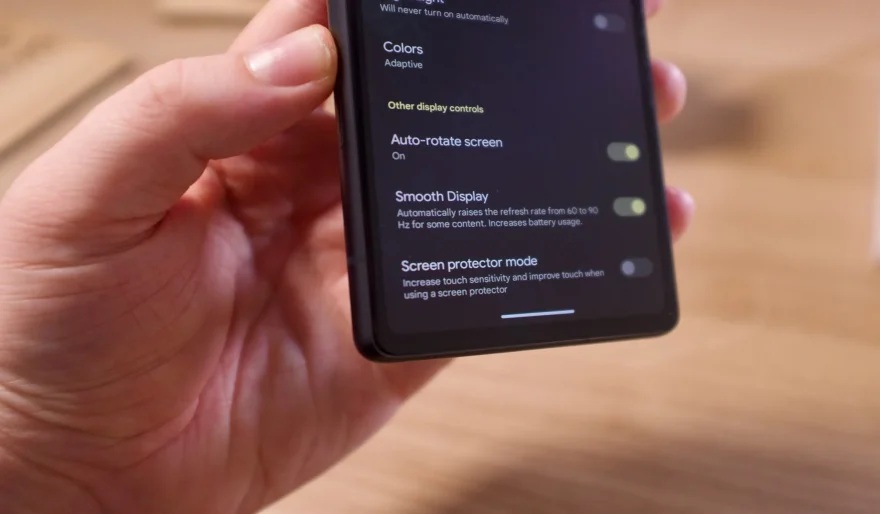How to enable automatic updates on my phone?
13 min read Enabling Automatic Updates on Your Phone - written by Hamza Bose, Senior Content Marketer April 10, 2024 10:26
Enabling Automatic Updates on Your Phone
1. Introduction
What is important to note is that the availability of software updates is not the same for each and every device. This ultimately depends on the smartphone's manufacturer and their decision of what they will be supporting over time. This article addresses the problem of enabling the automatic installation of these updates on popular smartphones that are used by people, with the intention of avoiding the problems that come with the unwillingness of updating to the latest software version. Over time, people seem to start to neglect these small seedings of features that are supposed to bring new life to their smartphones simply because updates can come with minor problems and annoyances that are time-consuming to fix. This is where the need for a stop is required because if the device remains exposed without the latest security patches, the experience during the usage of the smartphone can be a risky one.
When you bought your smartphone, you probably had a lot of high expectations for its performance. You were having fun while using it, and everything was working fine, up until at some point you received a notification that you have a software update available. You didn't really have the time to install it right away and you just dismissed the notification, without noting what and why the update was available. However, after some time passes, you start to get another notification about a different software update. You are now getting a little bit annoyed and you start to ignore some of the notifications without maybe even knowing what the update was really for. If this sounds like you, then you should know about a simple way to make your life easier - enabling automatic updates.
2. Benefits of Automatic Updates
On Android, you have an option to enable auto-updating. To do this, open the Play Store and tap the hamburger menu. Next, click on "Settings". Under "General", you'll find an option to enable auto-updates for apps.
To enable automatic updates for your apps, you can do so by configuring update settings both on Android and iPhone or iPad devices. On iPhone/iPad: Open settings (the gear button), tap your name at the top of the screen and then tap "iTunes and Wallet" settings. Tap "App Updates" to enable automatic updates. Your apps will now update on their own when updates are available.
In the same line of new features and bugs, updates can also slow down your device/app or make it less efficient. Without automatic updates, your app will always be running at optimal speed/to the most recent update. The developer will also take care to make sure bugs are reported and fixed so it doesn't occur in subsequent releases.
As previously mentioned, one of the key advantages of enabling automatic updates on your device is that you get new features first. As with bugs, new features are slowly (or rapidly) added into the app, but setting your apps to update automatically will ensure you get new features and improvements to the app as fast as possible.
Several companies update their apps with new features, but also with various bugs. Being on the latest version usually means you get bugs fixed using an updated newer version of the app. Setting your apps to update automatically will ensure your devices receive important updates needed for your device to function.
Automatic updates refer to the updates to the latest version of your apps, downloaded and installed on your device without you ever having to think about them. While you can always manually update your apps, automatic updates can also be useful in other ways. Here are a few reasons why you might want to enable automatic updates.
3. How to Check for Updates
The procedures for manually checking and scheduling automatic software updates on a mobile device will vary a bit by phone brand, but the underlying processes for both iPhone and Android are pretty similar. In this first section, we report the expected findings on most popular Android phones, including ones made by Travis' manufacturer ZTE, a Samsung, and LG. To manually check for an available system update using your ZTE Android phone, you would go to Settings > System > System Update > Check for Update. On the Samsung and LG, that would be Settings > Software update > Download and install. These are not the only ways to get to the check for update functionality on these phones, but these directions describe the general process. If there is an update for your ZTE, it would be recommended first to have your phone plugged into a charger and be connected to a WiFi network, as OS updates tend to be quite large, are often accompanied by description-like "release notes/companion" files, and are generally not allowed to auto-download over a metered cellular data connection, which is kind of standard practice for apps.
One of the many advantages of automatic updates is that they minimize a user's need to "shop" for OS versions, making it easier for a user to stay up-to-date. However, for various reasons, users may want some control over the timing of system updates. Maybe they want to avoid the seemingly common bugs associated with new system updates, update applications and the system together, or avoid going over their metered cellular data limits. Maybe they won't be able to get to a charger while their update is downloading, as new updates are becoming too large for some devices to download without being plugged into a charger. Or maybe they're curious and simply want to see what will be changed or fixed in the next release.
4. How to Enable Automatic Updates
3. Tap your email address on the Device Management page. This should bring you to a page showing all the apps you've added to the "Automatic Downloads" list. From here, you can customize which apps you can and can't update automatically. If you choose to do this, make sure to tick the checkboxes to the right of the app names. Depending on your subscription level, the selections in "Automatic Downloads" will enable or disable certain features. If you're having trouble with the app, this is the best place to start troubleshooting.
2. Open the Device Management app on your iPhone. To do this, tap "Settings" on your phone, then scroll down to "General" at the bottom. Once in this menu, tap "Device Management," located just under "Accessibility." This app is called "Profiles & Device Management" on some iPhones.
1. Open iTunes if you have an iPhone. If you have an iPhone, you can enable your phone's Automatic Downloads feature through iTunes instead of the Settings menu. To do this, click the "iTunes" button in the top-left corner of the window on a Mac, or the "Help" button at the top of the window on a PC. Then, find and click "Check for Updates" in the drop-down box, then click "Preferences." Check "Keep the Apple Music, Apple Books and Apps Up to Date" to enable automatic downloads for your iPhone's operating system and apps. If you want your iPhone's apps to update automatically but not the apps and operating system, click "Only Download In Wi-Fi."
5. Conclusion
Since it is virtually impossible for ordinary users to determine whether a newer version will introduce problems that lower an app's security, the "later is better" policy demonstrated with InstallInCore in this article might be the right default choice for most users: allow installers to pick the best time to update for all but specifically chosen apps. The InstallInCore design in this article requires more code than Android encourages or requires to enable background update installers for app writers who don’t have specific requirements. But ideally, Android might fully implement the new concept called enabling core appsets in code in the next release in 2020 to set three simple installer transitions with which an installer can enable app-specific, user-controlled install policies.
The basic technique demonstrated in this article lets an Android app automatically download and install a newer version of itself. With more complex logic, it should be possible to handle any app-specific security and behavior requirements in a single app without requiring user intervention for the update itself. While the writer of an app should be able to decide what their app should do, how much trust can be placed in app writers and/or app store inspection? Users have to make the ultimate choice about the apps they use on their phones. Lessons learned from recent Android malware outbreaks suggest app stores, including the Google Play Store, can only catch so many problems, leaving users as the final line of defense.
User Comments (0)
Popular Apps










Editor's Choice









